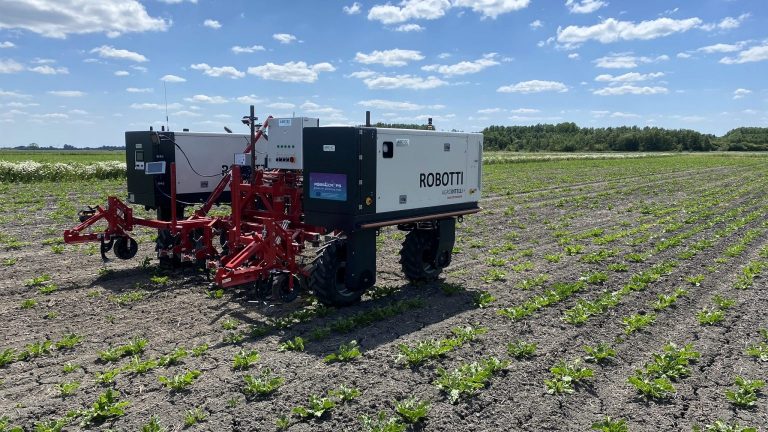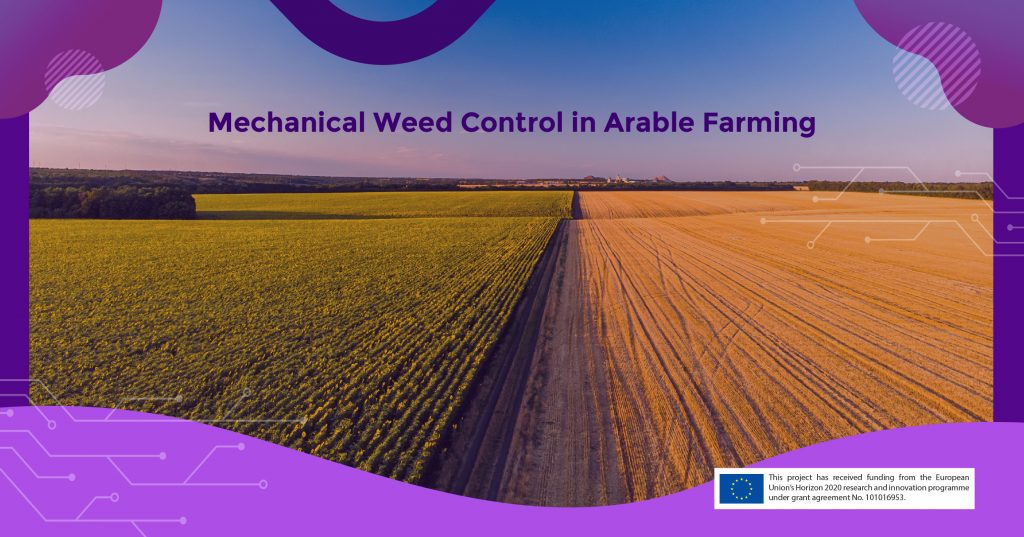We’re all familiar with those pesky intruders in every agricultural field: Weeds.
Weeds have been a persistent challenge in agriculture since the dawn of cultivation. These unwanted plants compete with crops for nutrients, water, and sunlight, leading to reduced yields and lower-quality produce. While chemical herbicides have long been the go-to solution for weed management, concerns about environmental impact and herbicide resistance have prompted a renewed interest in mechanical weed control methods. Among these methods, maximizing mechanical weed control in arable crops holds significant promise for sustainable and effective weed management practices.
Weeding control
First and foremost, it’s crucial to examine the preventive measures aimed at controlling weeds, serving as the first line of defence against their proliferation. Preventive measures hinge on rotational planning (both in terms of species selection and sequence), planting techniques, and tillage practices during fallow periods:
- Crop rotation refers to the specific types and order of crops cultivated in a particular field. Its primary objective is to maintain or enhance soil fertility and safeguard crops, all while ensuring the financial viability of farming operations. In crafting a crop rotation plan, farmers must carefully balance various goals, including soil fertility management, risk mitigation for crops, and overall farm profitability.
- Similar to crop rotation design, tillage practices during fallow periods play a significantl role in weed control within no-herbicide systems. Each weed, whether annual or perennial, possesses distinct germination requirements and characteristics, including optimal depth for emergence, soil moisture levels, duration of dormancy, triggers for germination, and annual rates of seed loss. Tillage methods can be strategically employed to either stimulate weed emergence or suppress it entirely.
- Selecting the optimal sowing time is a critical aspect of weed control. In organic agricultural systems, delaying the sowing of autumn grains is a common practice to minimize weed growth before winter sets in. Likewise, spring sowing should be timed to coincide with warmer soil temperatures and after several stale seedbeds have been prepared. This strategy ensures that the crop gets off to a strong start, reducing competition from weeds and promoting healthy growth.
Mechanical Weed control
Mechanical weed control involves the use of various tools and techniques to physically remove weeds from agricultural fields. Unlike chemical herbicides, mechanical methods target weeds directly, minimizing the risk of herbicide resistance and reducing chemical residues in the environment and food chain. Additionally, mechanical weed control methods can be particularly beneficial for organic farming operations, where the use of synthetic chemicals is restricted or prohibited.
Cultivation
One of the most common and widely used mechanical weed control methods in arable crops is cultivation. Cultivation involves the use of implements such as plows, discs, or harrows to disturb the soil surface and uproot or bury weeds. By breaking up weed roots and disrupting their growth, cultivation effectively suppresses weed populations and promotes crop growth. Precision cultivation employs GPS-guided implements to selectively target weeds while minimizing soil disturbance and crop damage. However, proper timing and technique are crucial to avoid damaging crop plants and exacerbating soil erosion.
“Weeders”
Another effective mechanical weed control method is the use of mechanical “weeders.” These specialized implements are designed to target weeds while sparing crop plants, using techniques such as mechanical abrasion, cutting, or uprooting. Weeders can be mounted on tractors or operated as standalone units, allowing for precise and efficient weed control in row crops and inter-row spaces. Some advanced weeders even utilize technologies such as computer vision and machine learning to identify and target weeds with unprecedented accuracy.
Precision implementation of tractors
The precise steering of tractors and activation of implements is crucial for mechanical weeding. This operation demands precision, particularly at low speeds, and is limited in performance by the narrow width of hoeing implements. Mechanical weeding typically occurs at speeds ranging from 2 to 10 km/h, employing mechanical, hydraulic, or electric actuators on the implement, controlled either by a second person or the driver. Recent advancements include camera-based systems enabling fully automated implement steering. Another significant factor affecting mechanical weeding performance is the accuracy of crop positioning, which is often compromised by movement through the hitch point, leading to crop row disturbances. However, the introduction of machine guidance systems and precision drilling into well-prepared seedbeds enables precise control over crop architecture and plant spacings within and between rows, resulting in exceptionally straight rows.
Robs4Crops Contribution

The Robs4Crops project, funded by Horizon 2020, introduces an efficient, fully autonomous robotic system. This project integrates intelligent implements, self-driving vehicles, and advanced software for planning and scheduling, aiming to minimize labour demands and costs while enhancing environmental sustainability and resource efficiency. By promoting reduced chemical usage, the project aims to foster a healthier ecosystem, preserving soil health and biodiversity.
Slow-growing crops like sugar beets and pumpkins demand meticulous weeding throughout the growing season to suppress unwanted weeds. To address this challenge, in the Netherlands, the Robs4Crops Large-scale Pilot 4 has adopted an innovative strategy, incorporating the Robotti robot, Precision Seeder, Tine-Weeder, and Row-Steered Hoeing Machine. The objective is to reduce the environmental footprint associated with traditional chemical weed control methods. The Robotti robot, outfitted with forward- and rearward-facing cameras, captures crucial before and after images, facilitating a comprehensive assessment of the weeding process quality. An interesting detail is that in 2023, limited rainfall caused clay soil to harden, challenging mechanical weeding. Despite this, the pilot project aims to replace chemical weed control with autonomous methods for sustainability. They worked on a 1-hectare pumpkin plot in 2022 and a 3-hectare sugar beet field in 2023, persisting in environmentally conscious agriculture despite weather obstacles.
For more updates about our Dutch pilot and Robs4Crops achievements, check out our Newsroom!
Conclusion
Despite the numerous benefits of mechanical weed control, implementing these methods effectively requires careful planning and consideration. Factors such as soil type, crop rotation, weed species, and weather conditions can all influence the success of mechanical weed control efforts.
In conclusion, the quest for effective weed management solutions in arable crops continues to drive innovation and experimentation in the agricultural sector. Mechanical weed control methods offer a promising alternative to chemical herbicides, providing farmers with sustainable and environmentally friendly options for weed management.

